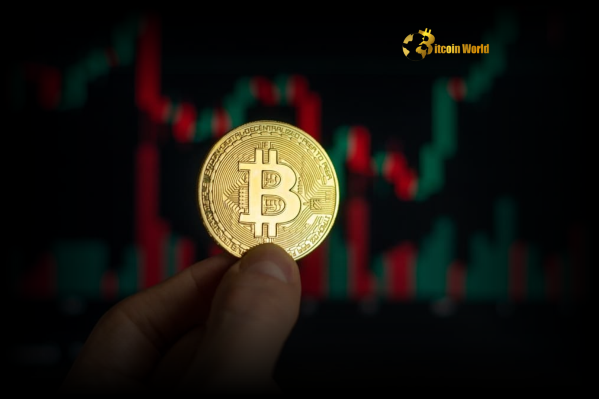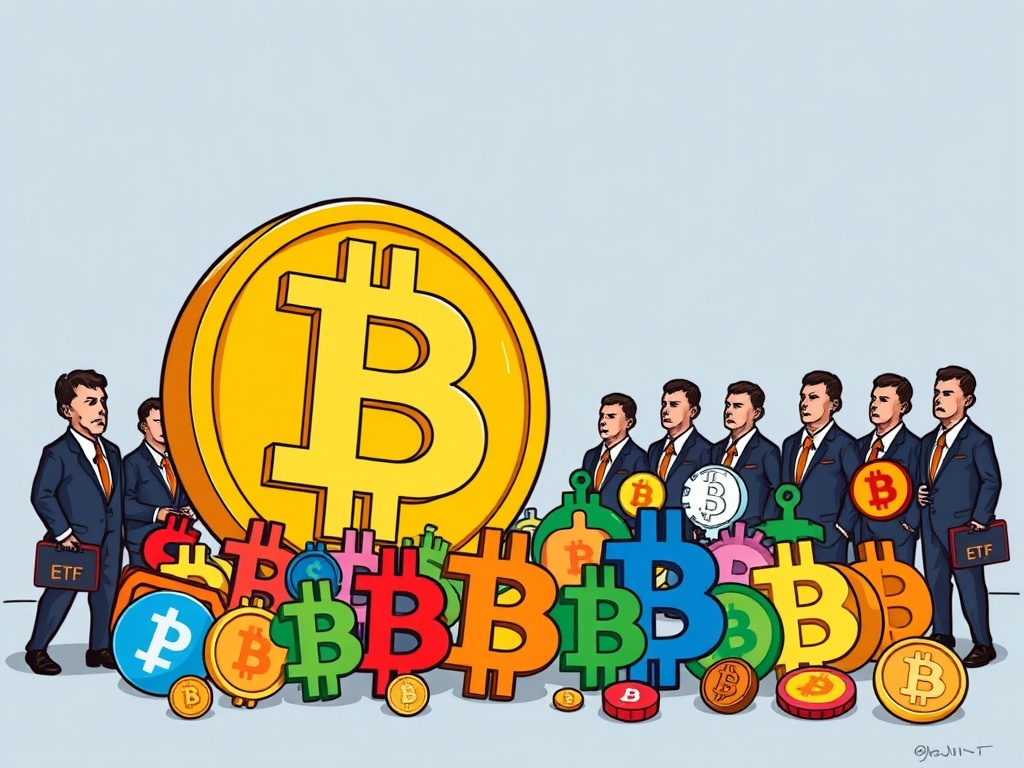BitcoinWorld

US Dollar Unveiled: BofA’s Cautious Forecast Amid Global Challenges
In the dynamic world of finance, where every ripple in the traditional markets can send waves through the cryptocurrency ecosystem, understanding the trajectory of the US Dollar is paramount. Bank of America (BofA), a titan in global finance, has recently reiterated its dollar forecast, projecting a slight downside despite a landscape riddled with complex market challenges. What does this mean for your portfolio, especially if you’re navigating the volatile waters of digital assets? Let’s delve into BofA’s perspective and its broader implications for the currency market.
Decoding BofA’s Dollar Forecast: What’s the Nuance?
Bank of America’s analysts maintain a nuanced stance on the US Dollar. While the greenback has demonstrated remarkable resilience over recent years, driven by aggressive Federal Reserve rate hikes and safe-haven demand, BofA anticipates a modest depreciation. This isn’t a call for a dramatic collapse, but rather a slight, gradual weakening against a basket of major currencies. The forecast suggests that the factors that propelled the dollar higher are beginning to wane, making way for a rebalancing in the global financial system.
Several key factors underpin BofA’s cautious outlook:
- Peak Interest Rates: The consensus is growing that the Federal Reserve is nearing the end of its tightening cycle, or has already reached it. As other central banks potentially catch up or maintain higher rates for longer, the interest rate differential that favored the dollar could narrow.
- Cooling Inflation: Signs of moderating inflation in the United States could reduce the urgency for further rate hikes, diminishing the dollar’s yield advantage.
- Global Growth Rebalancing: While the US economy has shown surprising strength, a potential rebound or stabilization in other major economies, particularly in Europe and Asia, could divert capital flows away from the dollar.
- Reduced Safe-Haven Demand: Should geopolitical tensions ease or global economic stability improve, the dollar’s appeal as a primary safe-haven asset might diminish.
Navigating the Current Currency Market: Beyond the Headlines
The currency market is a complex interplay of economic fundamentals, geopolitical events, and market sentiment. While BofA’s dollar forecast points to a slight downside, the broader picture reveals a landscape shaped by diverse forces. Central bank policies, for instance, are diverging globally, creating unique opportunities and risks. The European Central Bank (ECB) and the Bank of Japan (BoJ) are grappling with their own inflation dynamics and growth prospects, leading to different monetary policy paths compared to the Fed.
Consider the following dynamics shaping the current currency market:
| Factor | Impact on US Dollar | Broader Currency Market Effect |
|---|---|---|
| Interest Rate Differentials | Narrowing gaps reduce dollar’s yield appeal. | Increases volatility in G10 currency pairs. |
| Geopolitical Tensions | Initially boosts dollar as safe haven; prolonged instability can weigh. | Drives capital flows to perceived safer assets, impacting emerging market currencies. |
| Commodity Prices | Lower oil/gas prices can reduce inflation pressure, affecting Fed policy. | Influences commodity-exporting currencies (e.g., CAD, AUD). |
| Trade Balances | Persistent US trade deficit can put long-term pressure on the dollar. | Affects currency valuations based on export/import strength. |
Understanding these underlying currents is crucial for any investor, as they dictate the strength and direction of major currency pairs and, by extension, influence other asset classes, including digital assets.
What Market Challenges Lie Ahead for the Greenback?
Despite its enduring strength, the US Dollar faces several structural and cyclical market challenges that could contribute to its anticipated slight downside. These challenges are not merely short-term fluctuations but represent deeper shifts in the global financial landscape. One significant concern is the escalating US national debt. While not an immediate threat to the dollar’s reserve status, persistent fiscal deficits can erode investor confidence over the long term, especially if accompanied by high inflation.
Furthermore, discussions around de-dollarization, while often exaggerated, reflect a broader sentiment among some nations to reduce reliance on the greenback for trade and reserves. The rise of alternative payment systems and the exploration of Central Bank Digital Currencies (CBDCs) by various countries could, over time, offer viable alternatives to dollar-denominated transactions, albeit gradually. The competitive pressures from a resurgent Eurozone or a more open Chinese economy could also pose challenges to the dollar’s dominance.
Another challenge stems from the potential for a global economic slowdown. While the dollar typically benefits from risk-off sentiment, a prolonged and deep recession across major economies could lead to widespread deleveraging and a re-evaluation of global investment strategies, potentially impacting the dollar’s valuation in unforeseen ways.
Implications for Your Portfolio: A Glimpse into the Forex Outlook
For investors, BofA’s dollar forecast and the broader forex outlook present both considerations and opportunities. A slight depreciation of the US Dollar can have several ripple effects across various asset classes:
- Commodities: A weaker dollar typically makes dollar-denominated commodities, such as oil and gold, cheaper for holders of other currencies, potentially boosting their demand and prices. This could be beneficial for investors in these sectors.
- Emerging Markets: Many emerging market economies hold dollar-denominated debt. A weaker dollar eases the burden of servicing this debt, potentially improving their economic outlook and making their assets more attractive to foreign investors.
- Cryptocurrencies: The relationship between the dollar and cryptocurrencies is complex. While Bitcoin is often seen as a hedge against traditional financial instability, a weakening dollar could theoretically make alternative assets, including crypto, more appealing as a store of value or an inflation hedge. However, it’s also important to note that a significant portion of crypto trading is still denominated in USDT, a dollar-pegged stablecoin, linking crypto liquidity directly to dollar strength.
- International Investments: For US-based investors, a weaker dollar means that returns from international investments (stocks, bonds) will translate into higher dollar values when repatriated, boosting foreign asset performance.
The key takeaway for your portfolio is the importance of diversification and staying informed. Consider how a shifting forex outlook aligns with your investment goals and risk tolerance. It’s an opportune time to review your exposure to different currencies and asset classes.
The Global Economy and the Dollar’s Enduring Role: A Long-Term Perspective
While BofA’s forecast suggests a short-to-medium term slight downside, it’s crucial to consider the Global Economy and the US Dollar‘s enduring role within it from a long-term perspective. The dollar remains the world’s primary reserve currency, the dominant currency for international trade, and the preferred medium for central bank interventions. This status is deeply entrenched, supported by the depth and liquidity of US financial markets, the rule of law, and the sheer size of the American economy.
The dollar’s long-term trajectory will largely depend on the evolution of the Global Economy itself. Factors such as innovation, demographic shifts, geopolitical stability, and the pace of economic growth in other major blocs will all play a role. While challenges exist, the dollar’s fundamental strengths are not expected to erode rapidly. Instead, we might see a gradual evolution, where other currencies gain more prominence, but the dollar retains its central, albeit potentially less dominant, position.
Investors should continue to monitor macro-economic indicators, central bank communications, and geopolitical developments. The interplay between inflation, interest rates, and global trade dynamics will be critical in shaping the dollar’s future. Understanding these broader trends within the Global Economy provides a more complete picture of the dollar’s prospects.
Conclusion: Adapting to a Shifting Dollar Landscape
Bank of America’s dollar forecast, anticipating a slight downside, signals a period of rebalancing rather than a dramatic shift. It reflects a convergence of monetary policies, moderating inflation, and evolving dynamics within the Global Economy. For investors, particularly those engaged with the volatile world of cryptocurrencies, this outlook underscores the need for vigilance and adaptability. While the US Dollar remains a foundational pillar of the global financial system, its short-term trajectory could influence investment decisions across traditional and digital assets.
Staying informed about the nuances of the currency market and the broader forex outlook is essential. As market challenges persist, a diversified approach, coupled with a keen eye on macro-economic trends, will be key to navigating the opportunities and risks that lie ahead. The dollar’s journey is a reflection of the evolving global economic narrative, and understanding its path is crucial for making informed financial decisions.
To learn more about the latest Forex market trends, explore our article on key developments shaping the US Dollar liquidity.
This post US Dollar Unveiled: BofA’s Cautious Forecast Amid Global Challenges first appeared on BitcoinWorld and is written by Editorial Team





